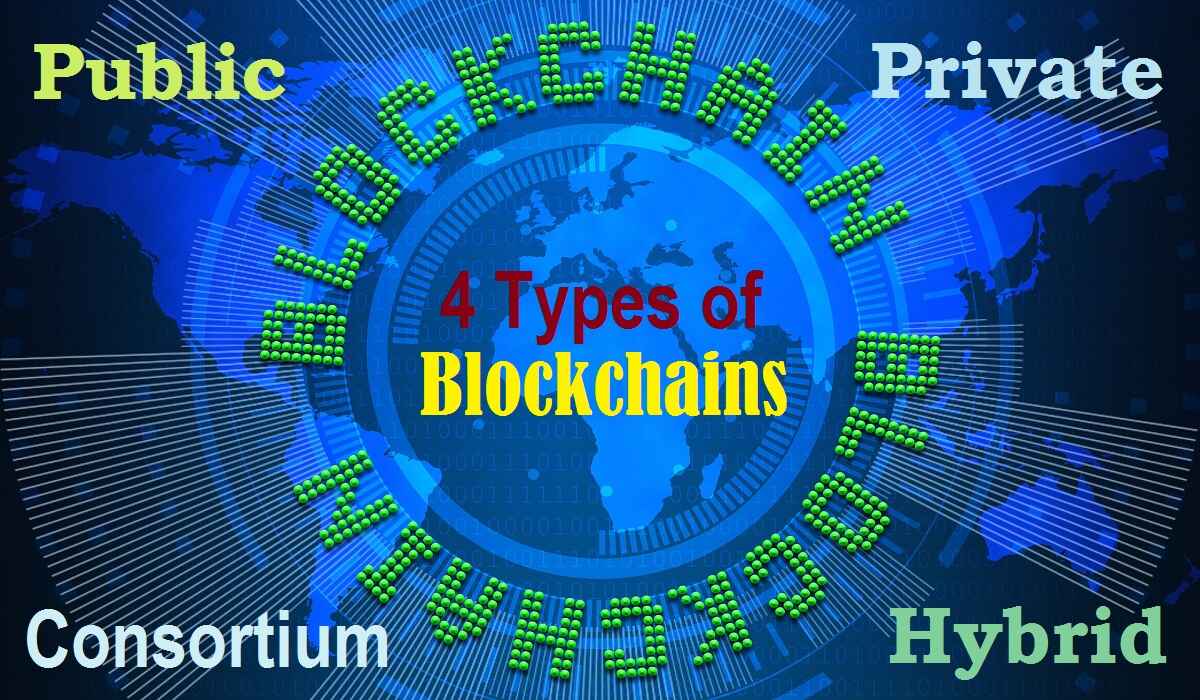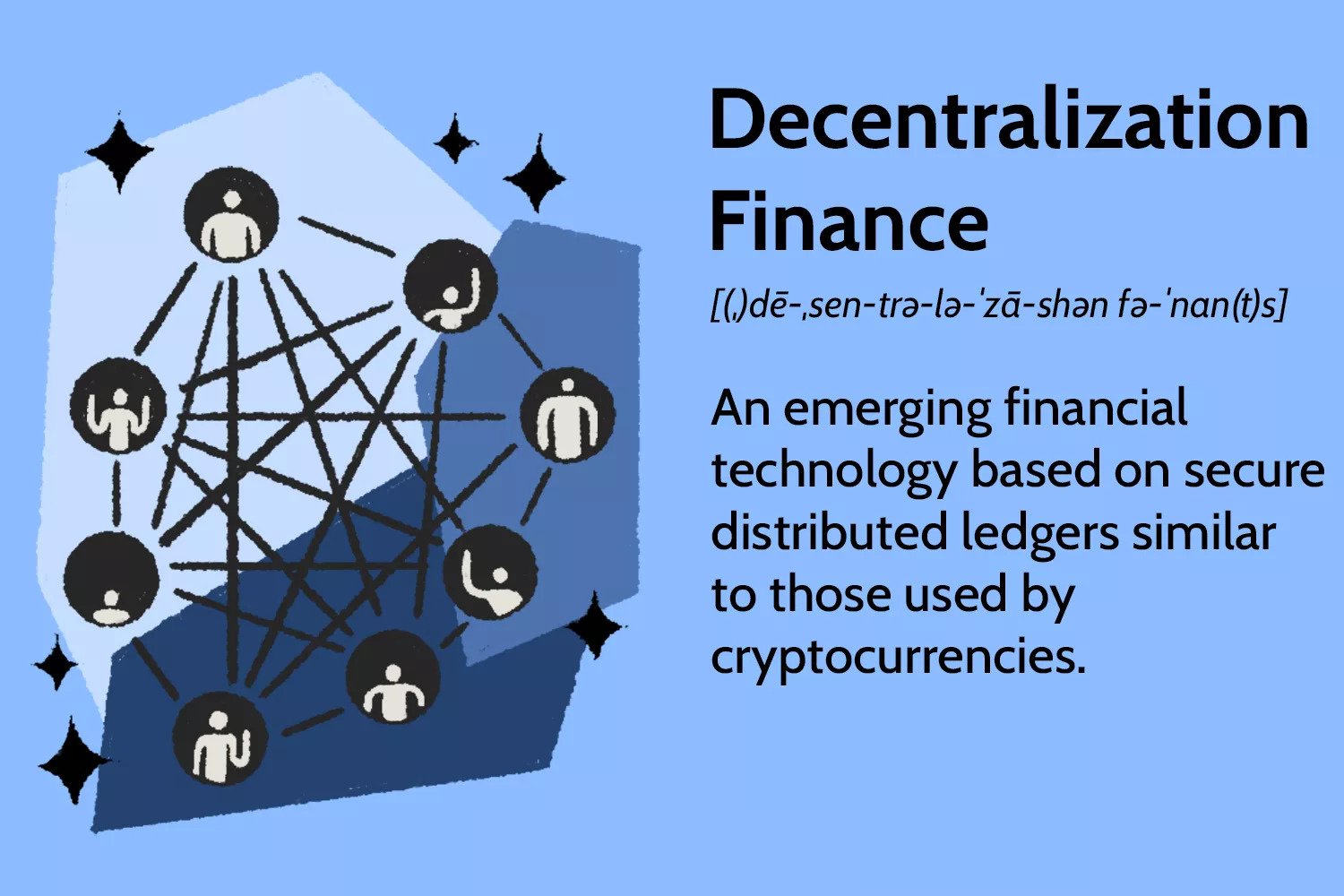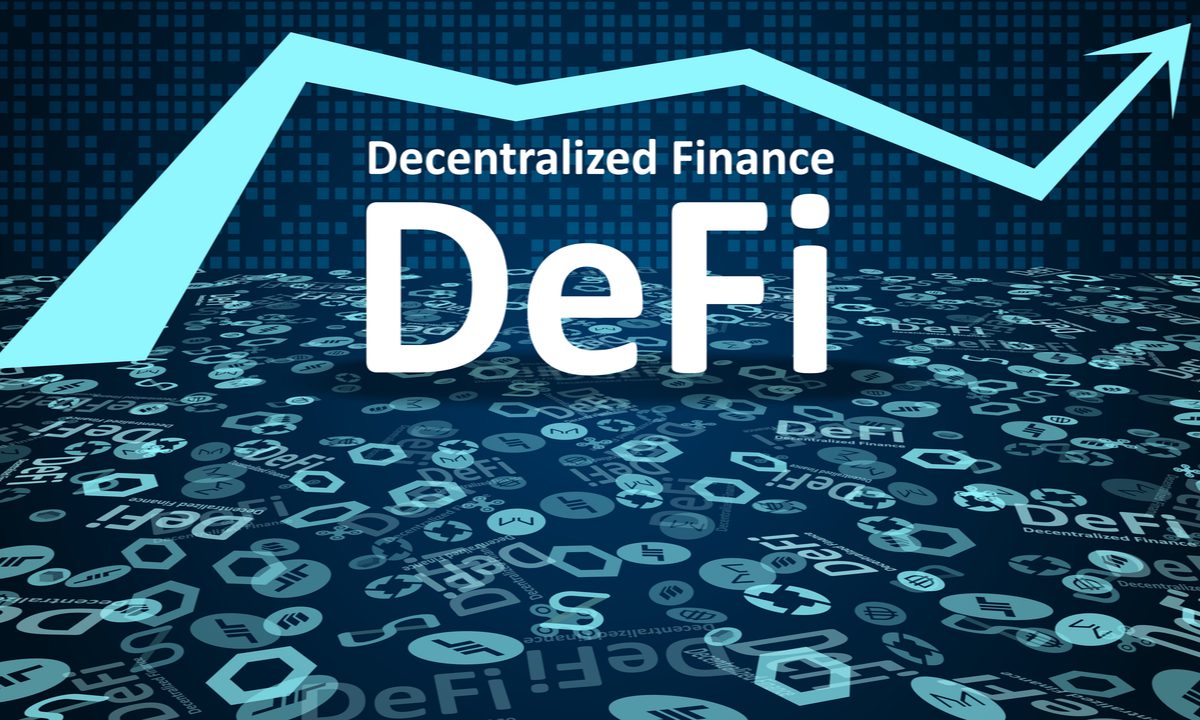Introduction
Welcome to the world of blockchain technology – a revolutionary decentralized system that has the potential to transform various industries and reshape the way we interact and transact online. One of the key concepts within the blockchain ecosystem is the idea of permissionless blockchains.
A permissionless blockchain, also known as a public blockchain, is a type of blockchain where anyone can join the network, participate in the consensus process, and validate transactions without needing any form of prior approval or permission. It operates on an open and inclusive basis, allowing for transparency, immutability, and decentralization.
Unlike permissioned blockchains, which require users to obtain authorization from a central authority or consortium before participating in the network, permissionless blockchains remove the need for intermediaries and enable direct peer-to-peer interactions.
At the heart of a permissionless blockchain is a secure and distributed ledger that records all transactions and activities across the network. This ledger is maintained by a decentralized network of nodes, each storing a copy of the entire blockchain history.
The rise of permissionless blockchains can be attributed to the invention of Bitcoin by the pseudonymous figure, Satoshi Nakamoto. Bitcoin, which operates on a permissionless blockchain, introduced the concept of a decentralized digital currency, establishing a new era of financial innovation and potential disruption.
Since the emergence of Bitcoin, numerous other permissionless blockchains have been developed, each with its own unique features and use cases. These include Ethereum, Litecoin, and many others that have taken the decentralization concept beyond the realm of digital currencies.
What is a permissionless blockchain?
A permissionless blockchain is a type of blockchain that allows anyone to participate in the network and contribute to the consensus process without requiring prior approval or permission. It is an open and decentralized system that operates on a trustless basis, creating a level playing field for all participants.
In a permissionless blockchain, there is no central authority or governing body that maintains control over who can join the network. Instead, the network is governed by a set of predefined rules and protocols that are enforced through a consensus mechanism, such as proof-of-work or proof-of-stake.
One of the key features of a permissionless blockchain is its transparency. All transactions and activities that occur on the blockchain are visible to all participants, allowing for greater accountability and auditability. This transparency ensures that no single entity can manipulate or alter the data on the blockchain without the consensus of the majority of participants.
Another important characteristic of permissionless blockchains is their immutability. Once a transaction is recorded on the blockchain, it becomes cryptographically sealed and linked to previous transactions, forming a chain of blocks. This makes it nearly impossible to alter or delete a transaction without the consensus of the network.
Furthermore, permissionless blockchains are designed to be resistant to censorship and interference from external parties. Since there is no central authority controlling the network, it is challenging for anyone to manipulate or disrupt the blockchain’s operations.
Permissionless blockchains also offer greater security compared to traditional centralized systems. By distributing the ledger among a network of participants, the risk of a single point of failure is significantly reduced. This makes it more difficult for malicious actors to compromise the integrity of the blockchain.
Overall, permissionless blockchains provide a decentralized and trustless environment that fosters innovation and collaboration. They empower individuals to participate in the network and contribute to the consensus, opening up new possibilities for peer-to-peer transactions, smart contracts, and decentralized applications.
How does a permissionless blockchain work?
A permissionless blockchain operates through a decentralized network of participants who collectively maintain and validate the integrity of the blockchain. Let’s explore the key components and processes that make a permissionless blockchain function:
1. Distributed Network: A permissionless blockchain consists of a network of nodes, each of which stores a copy of the entire blockchain. These nodes communicate and share information with each other to maintain consensus and ensure the accuracy of the blockchain.
2. Consensus Mechanism: To agree on the state of the blockchain and validate transactions, a consensus mechanism is utilized. In permissionless blockchains, popular consensus mechanisms include Proof-of-Work (PoW) and Proof-of-Stake (PoS). PoW requires participants, also known as miners, to solve complex mathematical problems to validate transactions and add new blocks to the blockchain. PoS, on the other hand, selects validators based on their stake in the network, rewarding them for maintaining the system’s security and integrity.
3. Transaction Validation: When a transaction is initiated, it is broadcasted to the network. Miners or validators then verify the transaction’s validity, ensuring that the sender has sufficient funds and meets any additional requirements defined by the blockchain’s protocol. Once validated, the transaction is included in a block for addition to the blockchain.
4. Block Formation: Transactions that have been validated are grouped together into blocks. Each block contains a unique identifier, a reference to the previous block, and a collection of verified transactions. Miners or validators compete to solve a mathematical puzzle to create a valid block. The first miner to solve the puzzle adds the block to the blockchain and receives a reward for their efforts.
5. Chain of Blocks: As new blocks are added to the blockchain, they form a linked chain where each block contains a reference to the previous block. This chain of blocks ensures that the order and integrity of transactions are preserved throughout the entire blockchain.
6. Security and Encryption: Permissionless blockchains rely on cryptographic algorithms to secure and protect the data stored on the blockchain. Cryptographic hashes and digital signatures are used to verify the authenticity of transactions and ensure data integrity. These security mechanisms make it extremely difficult for malicious actors to tamper with the blockchain’s data.
7. Incentive Mechanisms: To motivate participants to contribute their computational power, resources, and expertise to maintain the blockchain, permissionless blockchains often provide incentive mechanisms. These incentives can take the form of cryptocurrencies or tokens, which are rewarded to miners or validators for their contributions to the network’s security and maintenance.
By combining these elements, a permissionless blockchain enables a decentralized and transparent system of recording and validating transactions. It empowers individuals to participate in the network and collectively maintain the blockchain’s integrity, ensuring the trustworthiness and reliability of the system.
Advantages of permissionless blockchains
Permissionless blockchains offer several unique advantages that have contributed to their growing popularity and adoption. Let’s explore some of the key benefits of permissionless blockchains:
1. Decentralization: One of the most significant advantages of permissionless blockchains is their decentralized nature. Unlike traditional centralized systems that rely on a central authority, permissionless blockchains operate on a peer-to-peer network where no single entity has control. This decentralization promotes transparency, removes the need for intermediaries, and reduces the risk of a single point of failure.
2. Transparency: Permissionless blockchains are designed to be transparent, as all transactions and activities are visible to participants. This transparency ensures accountability and allows for the auditability of the blockchain. Any participant can verify the integrity of the blockchain, leading to increased trust and confidence in the system.
3. Security: Permissionless blockchains provide robust security mechanisms to protect the data stored on the blockchain. Through the use of cryptographic algorithms, such as hashing and digital signatures, the integrity and authenticity of transactions are ensured. The distributed nature of the blockchain and the consensus mechanism also make it difficult for malicious actors to manipulate or tamper with the data.
4. Accessibility: Permissionless blockchains offer accessibility to anyone with an internet connection, without requiring prior approval or permission. This inclusivity allows individuals from all over the world to participate in the network, empowering those who may not have had access to traditional financial or technological infrastructures.
5. Innovation and Flexibility: Permissionless blockchains provide a platform for innovation and experimentation. Developers can build decentralized applications (DApps) and smart contracts on top of permissionless blockchains, enabling new possibilities for a wide range of industries, including finance, supply chain, healthcare, and more. The open nature of permissionless blockchains allows for continuous improvement, as developers can propose and implement upgrades to the network.
6. Resistance to Censorship: Permissionless blockchains are designed to be resistant to censorship and external control. Since there is no central authority, it is challenging for any entity to interfere with the network’s operations or manipulate the data. This makes permissionless blockchains particularly useful in regions where there may be concerns about censorship or lack of trust in existing systems.
7. Potential for Financial Inclusion: Permissionless blockchains have the potential to promote financial inclusion by providing access to financial services for individuals who are unbanked or underbanked. Without the need for traditional intermediaries, permissionless blockchains enable direct peer-to-peer transactions, reducing costs and barriers for financial transactions.
These advantages highlight the transformative potential of permissionless blockchains and why they are being adopted across various industries. By leveraging the benefits of decentralization, transparency, security, and accessibility, permissionless blockchains are paving the way for a more open, inclusive, and efficient future.
Challenges and limitations of permissionless blockchains
While permissionless blockchains offer a range of advantages, they also come with certain challenges and limitations that need to be considered. Let’s explore some of the key challenges associated with permissionless blockchains:
1. Scalability: One of the primary challenges faced by permissionless blockchains is scalability. As more participants join the network and the number of transactions increases, the blockchain’s capacity to process and validate transactions can become a bottleneck. This can lead to slower transaction times and higher fees. Several scaling solutions, such as sharding and layer-2 protocols, are being developed to address this challenge.
2. Energy Consumption: Permissionless blockchains that use Proof-of-Work (PoW) consensus mechanisms, such as Bitcoin, have raised concerns about their high energy consumption. The computational power required to solve complex mathematical problems and secure the blockchain can result in a significant carbon footprint. The development of alternative consensus mechanisms, like Proof-of-Stake (PoS), aims to mitigate these environmental concerns.
3. Governance and Decision-making: Decentralized governance is another challenge faced by permissionless blockchains. Since there is no central authority, it can be challenging to reach consensus on protocol upgrades and decision-making. Disagreements among participants can lead to network forks, where the blockchain splits into separate chains. Mechanisms for effective governance and decision-making are crucial to maintain the stability and continuity of the blockchain.
4. Privacy and Confidentiality: Permissionless blockchains typically prioritize transparency, which can be a limitation when it comes to privacy and confidentiality of transactions. While the blockchain ensures the integrity of data, it may not conceal sensitive information from being visible to all participants. Various privacy-enhancing technologies, such as zero-knowledge proofs and encryption techniques, are being developed to address this challenge.
5. Regulatory Uncertainty: The development and adoption of permissionless blockchains have raised regulatory concerns and uncertainties in many jurisdictions. The decentralized and borderless nature of permissionless blockchains can create challenges in terms of compliance with existing financial regulations, identity verification, and anti-money laundering measures. Finding a balance between innovation and regulatory compliance remains an ongoing challenge.
6. User Experience: Interacting with permissionless blockchains can be complex for non-technical users. The process of setting up wallets, managing private keys, and understanding transaction fees can present usability challenges. Improving the user experience and making blockchain technology more accessible to a broader audience is essential for broader adoption.
Despite these challenges, ongoing research and developments are addressing many of the limitations faced by permissionless blockchains. With advancements in scalability, energy efficiency, privacy, governance models, and regulatory frameworks, permissionless blockchains continue to evolve and offer solutions to real-world problems.
Use cases for permissionless blockchains
Permissionless blockchains have opened up a world of possibilities and have found applications across various industries. Let’s explore some of the key use cases where permissionless blockchains are making a significant impact:
1. Digital Currencies: The most notable and widely recognized use case for permissionless blockchains is digital currencies. Bitcoin, the first permissionless blockchain, paved the way for decentralized cryptocurrencies. These digital currencies enable secure and direct peer-to-peer transactions, remove the need for intermediaries and provide an alternative to traditional financial systems.
2. Decentralized Finance (DeFi): Permissionless blockchains have given rise to the concept of decentralized finance (DeFi). DeFi encompasses various applications such as decentralized lending, borrowing, staking, and trading, without the need for traditional intermediaries. Ethereum, a prominent permissionless blockchain, has become a popular platform for building DeFi applications through the use of smart contracts.
3. Supply Chain Management: Permissionless blockchains offer a transparent and secure platform for supply chain management. By recording and verifying the movement of goods across the supply chain on a blockchain, participants can track and trace products, verify the authenticity of goods, and ensure transparency and accountability in the supply chain process.
4. Decentralized File Storage: Traditional centralized file storage systems are vulnerable to data breaches and censorship. Permissionless blockchains provide a solution by enabling decentralized file storage platforms that distribute files across a network of nodes. This ensures data integrity and availability, removes central points of failure, and allows users to maintain ownership and control of their data.
5. Identity Management: Identity management is another area where permissionless blockchains can provide significant value. By leveraging a blockchain’s transparent and immutable properties, individuals can have greater control over their digital identities, eliminating the need for centralized identity management systems. This can enhance data privacy, streamline identity verification processes, and strengthen security against identity theft and fraud.
6. Crowdfunding and Tokenization: Permissionless blockchains enable crowdfunding through Initial Coin Offerings (ICOs) and Security Token Offerings (STOs). These fundraising methods allow individuals to invest in projects and receive tokens that represent ownership or utility within the project. Permissionless blockchains provide a transparent and accessible platform for individuals to participate in investment opportunities and democratize access to capital.
7. Voting and Governance: Permissionless blockchains can facilitate secure and transparent voting systems. By recording votes on a blockchain, the integrity of the voting process can be ensured, eliminating concerns about tampering or manipulation. Permissionless blockchains also enable decentralized governance models, where participants can vote on protocol upgrades and decision-making processes, allowing for greater community involvement and control.
These examples highlight the versatility and potential of permissionless blockchains. As the technology continues to evolve and mature, we can expect to see even more innovative use cases emerge and disrupt traditional industries, creating new opportunities for efficiency, transparency, and inclusivity.
Conclusion
Permissionless blockchains have emerged as a powerful and disruptive technology that has the potential to revolutionize various industries. Their decentralized nature, transparency, and security offer numerous advantages over traditional centralized systems. By eliminating the need for intermediaries and enabling direct peer-to-peer transactions, permissionless blockchains provide an open and inclusive platform for innovation and collaboration.
We have explored the concept of permissionless blockchains and their key characteristics, including their open participation, transparency, immutability, and resistance to censorship. Despite their advantages, permissionless blockchains do face challenges such as scalability, energy consumption, governance, privacy, and regulatory compliance. However, ongoing research and developments are addressing these limitations, paving the way for a more efficient, accessible, and sustainable blockchain ecosystem.
The use cases for permissionless blockchains are expanding rapidly. From digital currencies and decentralized finance to supply chain management, identity management, and more, permissionless blockchains are enabling revolutionary applications across various industries. These technologies empower individuals, enhance security, promote transparency, and offer new opportunities for financial inclusion and decentralized governance.
As we continue to witness advancements in permissionless blockchains, it is evident that the technology is transforming the way we transact, store data, govern, and interact online. However, it is important to acknowledge that permissionless blockchains are just one facet of the larger blockchain and decentralized technology landscape. As the technology evolves, it is crucial to strike a balance between innovation, regulation, and user experience to fully unlock the potential of permissionless blockchains.
In conclusion, permissionless blockchains are driving a paradigm shift towards decentralized and inclusive systems that rethink traditional models of trust, security, and governance. With ongoing developments and real-world applications, permissionless blockchains are set to reshape industries and offer new possibilities for a more transparent, secure, and equitable future.

























